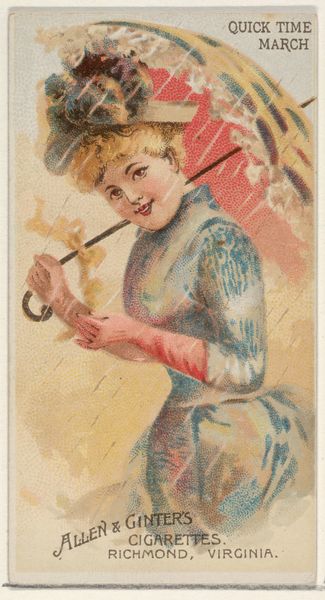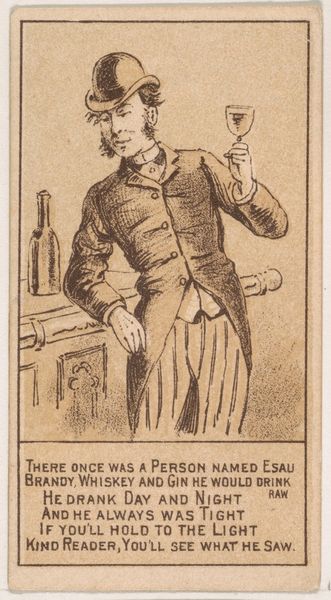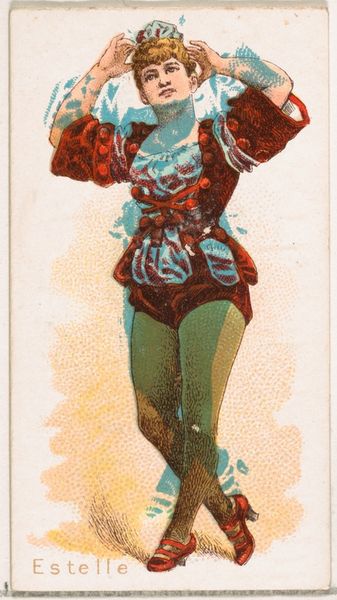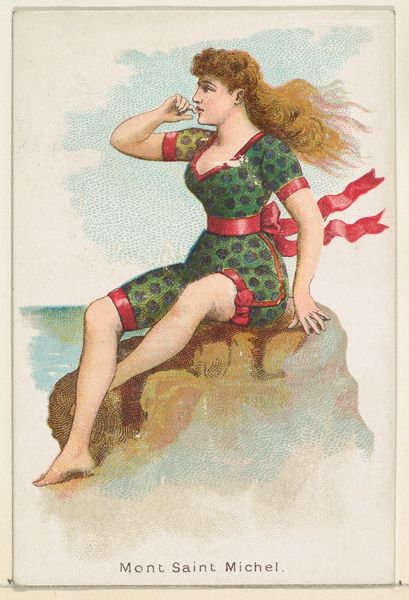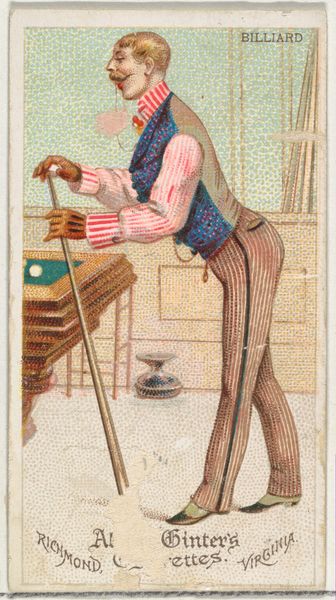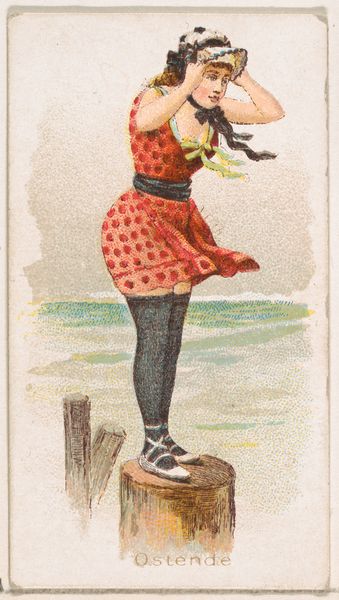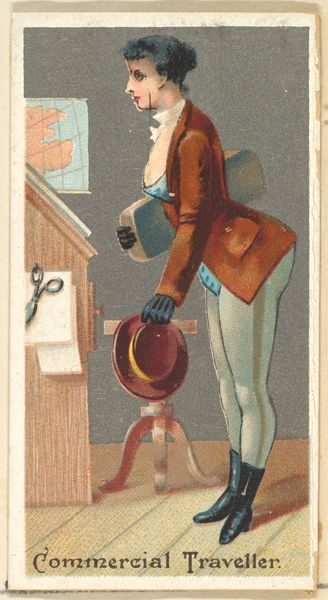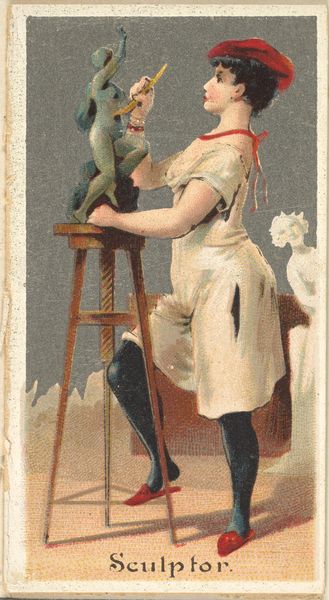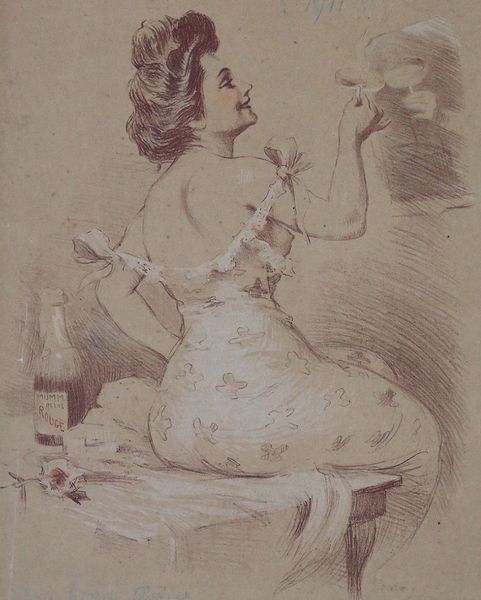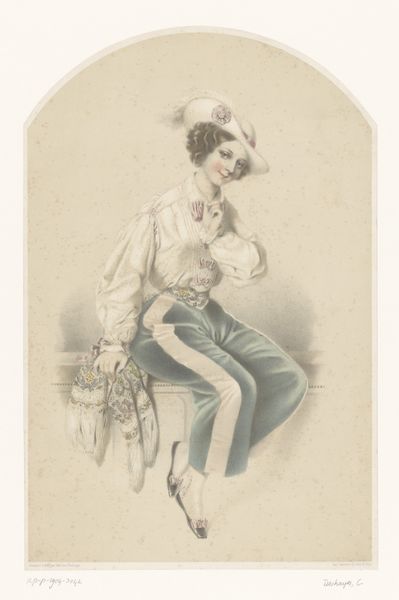
painting, watercolor
#
portrait
#
art-deco
#
painting
#
caricature
#
watercolor
#
intimism
#
surrealism
#
watercolour illustration
#
genre-painting
#
realism
Copyright: Tsuguharu Foujita,Fair Use
Curator: Foujita’s "Young Woman with a Mirror," painted in 1935, strikes me as incredibly intimate. There’s this soft, almost wistful mood hanging in the air. Editor: The surface texture itself communicates that softness you're feeling. You have to zoom in to appreciate that Foujita created this using delicate watercolour washes. It's subtle, really highlighting the texture of the paper. The process makes you think of other related “feminine” arts: costume and cosmetics, lace-making, the boudoir itself… Curator: It feels very Art Deco, almost surreal at the same time. Her gaze seems distant, detached. I get the sense of being both a privileged observer and somehow intruding upon a private moment. She's there, yet not fully present with us, if you know what I mean? Editor: And where *is* she? That manicured public garden reads a little like theatre flats. If this is genre painting, as our records suggest, I want to know, “What kind of life allows this moment of leisure?” How many unseen people produced her blouse, compact mirror, the pigments for the painting? Curator: Foujita had such a complicated relationship to both Japanese and European identity – in both spheres he seemed constantly self-constructing an “Artist” identity. So, I think he was playing around with surface and construction here – look at that somewhat cartoonish drawing within a drawing presented by the compact mirror, where the scene looks to be an urban architectural scape, as well as the buttons marching down her torso. It's like she's actively building an image of herself. Or several images? Editor: Right – not a stable representation but something more fleeting. The "caricature" element comes through more clearly now you point that out, but for me, the whole artwork suggests ideas about labor and how appearances function as a commodity, both for the artist and for his subject. How can we view her “essence” except as a production, a watercolour sketch, for mass consumption? Curator: Absolutely, I am struck by the idea of her self-representation in this captured instant of the 1930s. To me it is a bittersweet commentary on women and image construction in that era! Editor: For me, this makes me consider all the skilled, underpaid workers behind it, and makes me think about commodity itself. It's complex, this image, isn’t it?
Comments
No comments
Be the first to comment and join the conversation on the ultimate creative platform.

